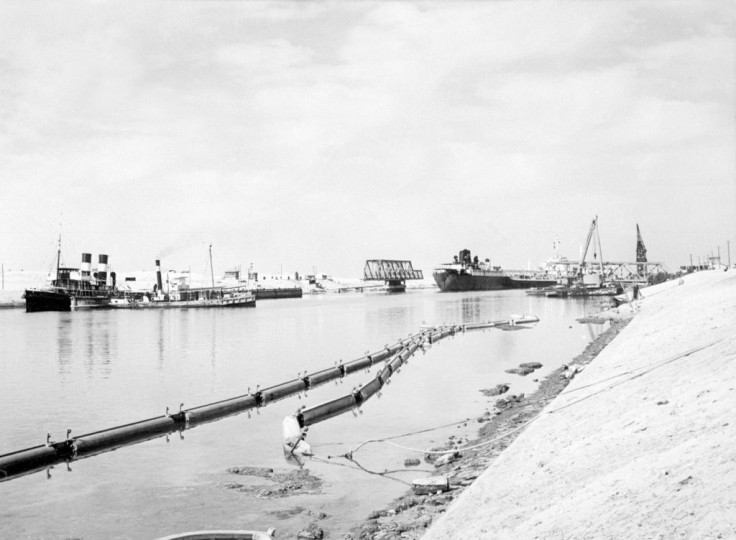Suez Canal: Expansion And Modernisation

The Suez Canal has been regularly expanded and modernised since it opened 150 years ago and is today capable of accommodating some of the world's largest supertankers.
Here is a look back at key stages in the enlargement of the waterway, which handles roughly 10 percent of international maritime trade.
When the sea-level canal was first opened in 1869, it was 164 kilometres (102 miles) long and eight metres (26 feet) deep.
It could accommodate ships of up to 5,000 tons to a depth 6.7 metres which constituted the bulk of the world's fleet at the time, according to the Suez Canal Authority.
In 1887 the canal was modernised to allow navigation at night, which doubled its capacity.
It was not until the 1950s that the waterway was substantially expanded, deepened and lengthened, following demands from shipping companies.
By the time it was nationalised by Egypt's President Gamal Abdel Nasser in 1956, it was 175 kilometres long and 14 metres deep, and could take tankers with a capacity of 30,000 tons to a depth of 10.7 metres.
A major expansion in 2015 took the length of the waterway to 193.30 kilometres and its depth to 24 metres.
It meant that the canal could handle supertankers with a capacity of 240,000 tons, some of the biggest in the world, that went up to 20.1 metres deep in the water.
In 2019 around 50 ships used the canal daily, compared with three in 1869. Traffic is expected to almost double by 2023 with two-way circulation also reducing waiting times, the authority says.
The majority of oil transported by sea passes through the Suez Canal, which is the fastest crossing from the Atlantic Ocean to the Indian Ocean but demands hefty passage tolls.
The journey between ports in the Gulf and London, for example, is roughly halved by going through the Suez -- compared to the alternate route via the southern tip of Africa.
Most of the cargo travelling from the Gulf to Western Europe is oil. In the opposite direction, it is mostly manufactured goods and grain from Europe and North America headed to the Far East and Asia.
jah-eab/br/jkb/rbu
© Copyright AFP 2024. All rights reserved.





















